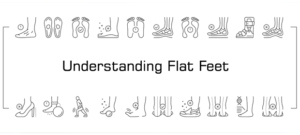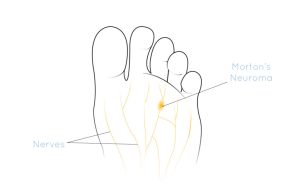Tailor’s Bunion
What is a Tailor’s Bunion or Bunionette?
A bunionette is similar to a bunion but smaller, and on the opposite side of the foot. It affects the joint just before the smallest toe, named the 5th metatarsophalangeal joint. Over time, a bump of bone gradually develops to the side of this joint and can become painful. As the size increases it becomes more difficult to find comfortable footwear, and symptoms of pain develop. A bunionette is often called a Tailor’s bunion because they were frequently seen in tailors who used to sit cross-legged while working.
What causes a bunionette?
Similarly to a bunion, there are no single definitive causes or a Tailor’s bunion or bunionette. Some people are genetically predisposed to developing them. We also know that repetitive trauma to a bone stimulates extra bone growth which increases its size.
What are bunionette symptoms?
Typical symptoms involve pain in this joint exacerbated from activity. Finding footwear wide enough to accommodate the bump can be a problem as pressure from shoes can be painful.
Bunionette pain on the bottom of the foot
A bunionette can be painful under and to the side of the 5th metatarsophalangeal joint. As the bump increases in size, pressure to the area increases which can also cause callus and corn formation.
How to prevent a Tailor's bunion from getting worse?
There are no guaranteed treatments to prevent them from becoming worse but you can manage them the best you can to help slow down worsening. If your feet are hypermobile (very flexible), stabilising them with custom foot orthoses (insoles) may help. These can be made to also include offloading of the joint.
Bunionette or Tailor's bunion treatment
Conservative treatments include footwear changes, corn and callus removal, and custom orthotics (insoles).
Orthotics can be made to offload this joint which reduces pain and pressure. However, to accommodate this, there needs to be enough space in the shoes. Sometimes a pad with a cavity to place over the joint can help prevent rubbing from the shoe.
If the pain in the joint is acute, a one off therapeutic injection could be carried out to manage the pain.
In a large portion of cases however, surgical options eventually need to be considered. This involves shaving the bony bump off, and often realigning the 5th metatarsal bone.
Surgery for Tailor's bunion
The Tailor’s bunion or bunionette procedure can be carried out under local anaesthesia or sedation as a day case.
Following an incision, the excess bone is trimmed and smoothed/ shaved. The bone is then cut and the bone shifted inward. Surgical screws are used to stabilise the bone in the corrected position.
You will be provided with a postoperative shoe and crutches to aid mobilisation over the first two weeks. It is important to rest as much as possible to promote healing.
At two weeks you should no longer require the crutches and postoperative shoe. You can typically return to normal activities at this stage, though high impact activities should be avoided until six-eight weeks. following surgery.
Frequently asked questions
Surgery is the only way to reverse and fix a Tailor’s bunion. Your surgeon can discuss this option with you at your appointment. X-rays will be suggested prior to a surgical plan.
You won’t be able to get rid of it without surgery but sometimes good footwear and orthotics can make it manageable.
Tailor’s bunion deformities are progressive, so they will usually slowly get worse with time.
Related Blogs
Thoughts and advice on foot health care from the Podogo team.


















































